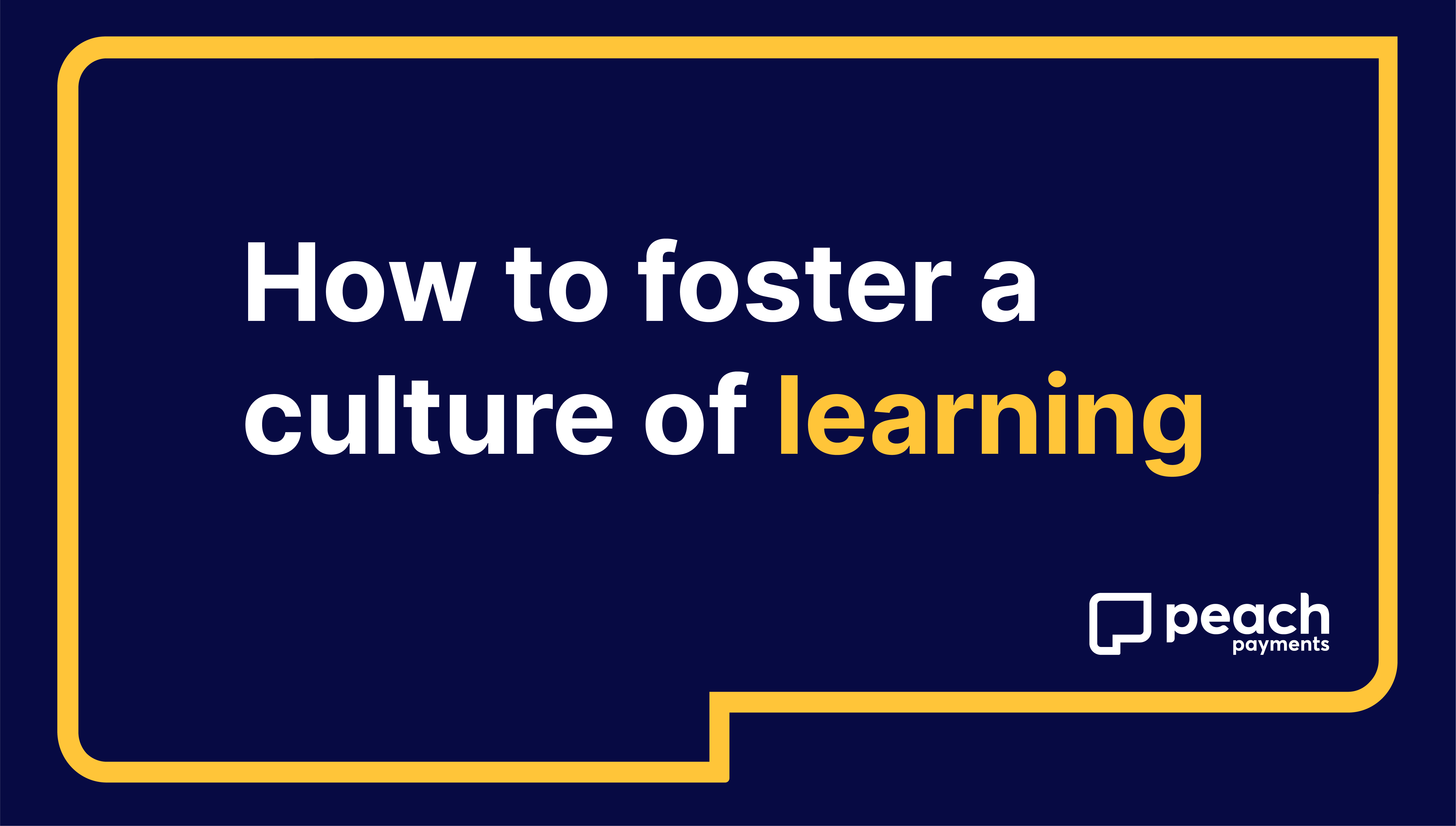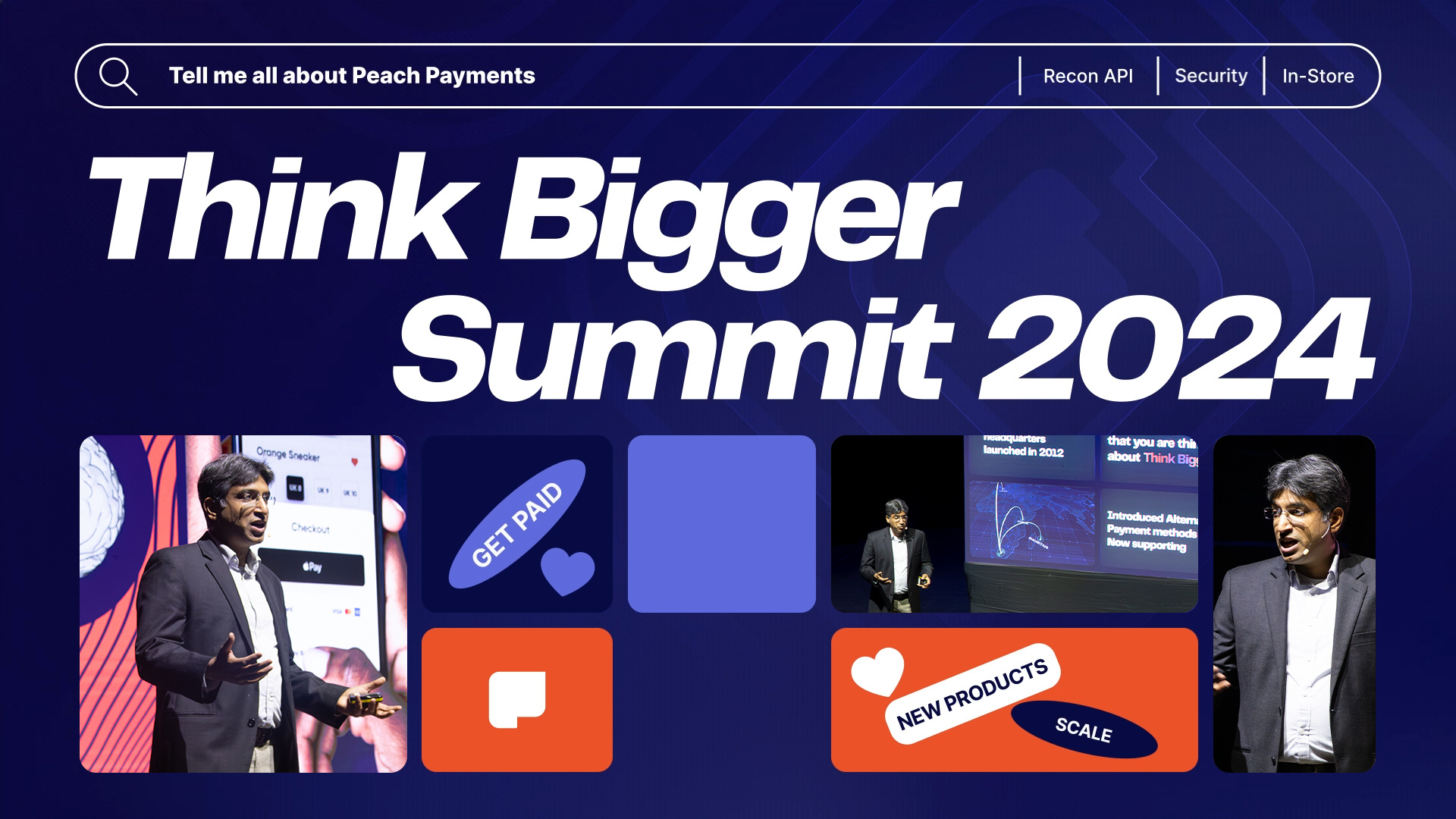iTickets x Peach Payments Point of Sale
Building unforgettable experiences together
Read More
A programme that engineering managers can use to measure how we are learning and how to increase learning their teams

11 June 2022 - By Ruberto Paulo, Head of Engineering at Peach Payments
As a developer-turned-manager, my focus has changed from solving coding problems to solving people and business problems. These days, I measure my success based on our teams doing meaningful things and customers loving the product.
In the process, I have come to realise the absolute necessity of cultivating a learning culture. Our clients are mainly retailers, who don’t care whether their customers use a credit card, EFT, rewards or cash on delivery. What they care about is the success rate generated by the triangle of the payment gateway (such as Peach Payments), the merchant bank and themselves. In other words, can they accept payment and sell their product?
We work with innovative retailers - think SweepSouth, Netflorist, Pargo, and OneDayOnly - and technology (such as WooCommerce, Wix, Shopify, and Magento ), so continuous learning and personal development are central to what we do. On top of that, my teams need to be able to work on everything from subscription models to one-click payments, mobile integrations, and gig-economy payment solutions that currently process more than R1-billion a month.
The knowledge-gap problem
Most online shoppers do not realise they’re using one of our products, because payment solutions are the roads and the highways that others drive their trucks and build their businesses on. In 2020, Peach Payments saw a 400% increase in customer acquisition and revenue growth of 130%. There is no way my teams, which are responsible for integrating our payment gateway into whatever requirement a retailer has, could have done this without learning from one another.
I needed to create a framework to allow my new team members to get up to speed fast. We need an engineering team that has to be very diverse in how they approach problems, so the team members are from a vast array of places, speak different languages, and focus on different aspects of technology. We started to notice a lot of conflict and challenges, and it took a long time for individuals to understand the way we build software.
Our products are complex and our technologies are also quite obscure, with few online resources to self-learn. This meant it could take new recruits three to four months to start learning what we’re doing, and six months to start actively contributing, which is a long period to onboard someone. It was a real challenge for us, as most people remain in a position for between three and six years (if it’s a good company), meaning taking six months to learn how to contribute was too long.
The learning solution
In response, we came up with a programme that engineering managers can use to measure how we are learning and how that increase in learning is helping people to join, become immediately effective and have a long-term impact on how long they stay.
We started looking at the indicators that teams are actively learning, and actively sharing what they were learning with their team members and other teams in the engineering group.
We noticed some teams were learning faster than others and that their portfolios were better configured for learning. Conversely, we identified that the obscurity of some of the technologies we work with and the lack of self-learning resources were slowing down learning in other teams. A key finding was that teams that communicated well delivered better results. In addition, teams that made learning a part of every bit of work they did, and asked more and better questions, had better results.
What we learnt about learning
In the process, we learnt that teams could not just copy what another team had done to achieve this culture of learning. They could take inspiration from other teams, but had to understand their very specific work context to foster a learning culture.
We found that those team members who learnt three main contexts early on in their tenure did the best. Those three contexts are:
We then focused on helping each team member to become masters in their field. This relies on them being aware of a further three contexts, namely:
But how does one measure if these are working well in teams?
How to measure a learning culture
We came up with six indicators that our teams have a learning culture:
Entrenching a learning culture in our teams is an ongoing process, and critical to all of it is that we learn from each other. In an environment where tech skills are increasingly rare, businesses that can attract, develop and retain these key skills will have a competitive edge.
No spam. Just the latest news, ecommerce tips and tricks to help you scale your business.

Discover the impactful journey of Peach Payments innovating payment solutions over the past 12 years, and future plans to empower businesses across Africa.
Read More.jpg)
With a focus on quality, community, and customer satisfaction, Bloomable stands out as a pioneer in the online marketplace, transforming the way local florists connect with their customers and compete in the digital landscape.
Read More.png)
The 2024 World Wide Worx report, sponsored by Peach Payments, Mastercard and AskAfrika, reveals that South Africa’s online retail surged to R71 billion in 2023, with projections to exceed R100 billion by 2026. Discover more key findings below to help your business succeed online.
Read More%20-%20Compressed.webp)
Nedbank Direct EFT is now available as a payment option on ecommerce websites that use Peach Payments, a leading South African payment gateway.
Read More.webp)
Investing in tomorrow: The benefits of business cash advance, and how to tell whether a cash advance is right for your business
Read More.png)
.png)
.png)
.png)
.png)